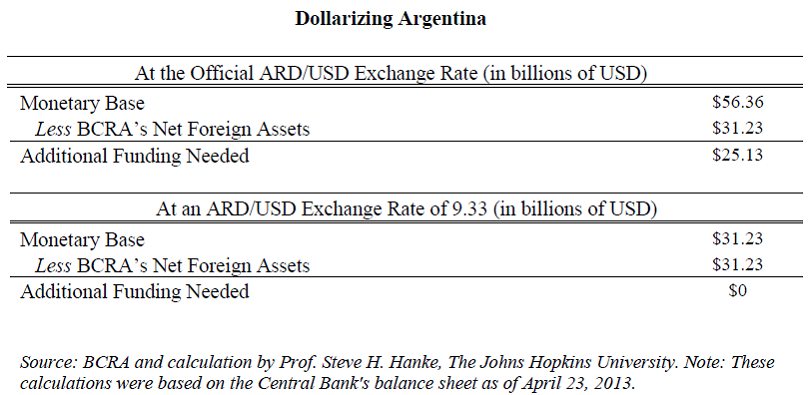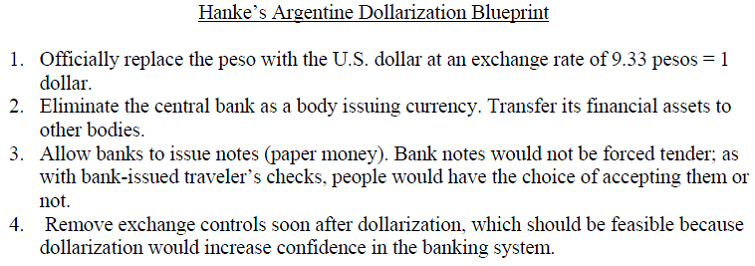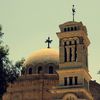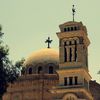Fęrsluflokkur: Evrópumįl
22.5.2013 | 18:15
Höldum įfram barįttu gegn innlimun Ķslands ķ Evrópusambandiš
Höldum įfram barįttu gegn innlimun Ķslands ķ Evrópusambandiš.Fyrst birt 22. maķ 2013.Loftur Altice Žorsteinsson.Žvķ mišur er ekki aš sjį, aš rķkisstjórn Sigmundar Davķšs Gunnlaugssonar ętli aš taka djarfmannlega į ESB-mįlinu. Ķ raun er bara tekiš viš keflinu frį rķkisstjórn Jóhönnu og žaš vafiš ķ bómull og silki. Krafan um aš višręšur verši stöšvašar STRAX og aš Alžingi geri žaš meš įlyktun er algerlega vanvirt. Ķ stjórnarsįttmįlanum segir:
Hér stendur skżrum stöfum, aš ESB-umsókninni er haldiš ķ nįkvęmlega sama horfi og rķkisstjórn Jóhönnu Siguršardóttur skilur viš hana. Sś furšulega įkvöršun er tekin, aš gerš skuli śttekt į stöšu višręšnanna og aš gerš skuli śttekt į žróun mįla innan ESB. Žetta merkir aš žjóšin mun um langa framtķš hafa ESB-mįliš hangandi yfir sér eins og fallöxi. Žetta er nįkvęmlega žaš sem Evrópusinnar hafa óskaš eftir. Žeir vilja bķša fęris til aš hefja aš nżgju ašlögun aš ESB.Samstaša žjóšar mun žvķ halda įfram barįttu gegn ašlögun aš ESB og ekki veršur séš aš rķkisstjórn Sigmundar muni leggja okkur mikiš liš. Lįtiš veršur reyna į afstöšu Alžingis, enda er žaš Alžingi sem veršur aš slķta višręšunum, ekki rķkisstjórnin. Žaš var Alžingi sem hóf višręšurnar og stjórnskipulega er žaš žvķ Alžingi sem veršur aš slķta žeim. Ķ ljósi žeirrar stašreyndar aš Alžingi fer meš mįliš, er undarlegt aš sjį eftirfarandi ummęli Bjarna Benediktssonar:
Getur nokkur annar en Evrópusinni talaš meš žessum hętti? Žarf rķkisstjórnin aš standa framkvęmdastjórn ESB skil į afstöšu Ķslands, įšur en nokkuš hefur veriš gert ķ mįlinu? Žarf aš kanna višbrögš ESB viš įkvöršun Ķslands, įšur en Alžingi tekur įkvöršun um slit višręšna? Hvers vegna ętti žingiš aš fjalla um įframhald višręšna, žegar fyrir liggur aš žjóšin hefur engan įhuga į innlimun Ķslands ķ ESB? Hér er veriš aš snśa į haus žeirri atburšarįs, sem veršur aš višhafa. Ég spyr hvort nokkur sjįlfstęšissinni geti haldiš uppi žeim mįlflutningi sem Bjarni Benediktsson gerir og hefur raunar gert allt frį Landsfundi Sjįlfstęšisflokks 24. febrśar 2013?Yfirlżsing: Alžingi ber STRAX aš slķta formlega višręšum viš ESB.Stöšvum strax ašlögun aš ESB - undirskriftasöfnun. |
19.5.2013 | 20:24
Yfirlżsing: Alžingi ber STRAX aš slķta formlega višręšum viš ESB
Yfirlżsing:Alžingi ber STRAX aš slķta formlega višręšum viš ESB.19. maķ 2013.Žann 16. jślķ 2009, samžykkti Alžingi įlyktun um »aš leggja inn umsókn um ašild Ķslands aš ESB«. Įlyktunin hlaut samžykki Alžingis meš ašeins 33 atkvęšum af 63. Tillögu, um aš leita įlits žjóšarinnar į žessu afdrifarķka feilspori, var hafnaš meš 32 atkvęšum. Umsóknin um ašild aš Evrópusambandinu var žannig alfariš į įbyrgš žess meirihluta į Alžingi sem studdi rķkisstjórn Jóhönnu Siguršardóttur. Umsóknin var hvorki į įbyrgš stjórnarandstöšunnar į Alžingi né žjóšarinnar.Ķ upphafi višręšna, hélt rķkisstjórn Jóhönnu Siguršardóttur žvķ fram, aš višręšur um ašild Ķslands aš ESB myndu taka ķ mesta lagi 18 mįnuši. Lišnir eru 46 mįnušir sķšan Alžingi samžykkti aš sękja formlega um ašild landsins og mikilvęgustu kaflar stjórnarskrįr Evrópusambandsins (Der Vertrag von Lissabon) hafa ekki ennžį veriš opnašir. Aš mati »Samstöšu žjóšar« eru engar forsendur til aš ljśka žessum višręšum. Įframhald višręšna vęri eins og meinsemd sem heldur įfram aš draga mįtt śr sjśklingi sem žjįšst hefur af hinni alvarlegu ESB-sżkingu ķ 46 mįnuši.»Samstaša žjóšar« telur žjóšarnaušsyn aš Alžingi slķti strax višręšum um ašild Ķslands aš ESB og aš višręšunum verši slitiš formlega meš įlyktun. Višręšurnar voru hafnar meš įlyktun meirihluta Alžingis og žaš vęru stjórnskipuleg mistök aš haga slitum į einhvern annan hįtt. Benda mį į, aš allt frį september 2009, hafa veriš geršar kannanir um afstöšu landsmanna til inngöngu landsins ķ ESB, af Capacent-Gallup. Nišurstöšur žessara kannana hafa įvallt veriš į einn veg, 60% - 70% žjóšarinnar hefur veriš andvķgt ašild. Žęr hugmyndir, aš efna beri til žjóšarkönnunar um višhorf almennings til įframhaldandi višręšna viš ESB, eru forsendulaust blašur.»Samstaša žjóšar« skorar į forustu Framsóknarflokks og Sjįlfstęšisflokks aš setja skżr įkvęši um formleg slit višręšna viš ESB, ķ sįttmįla žessara flokka um nżja rķkisstjórn. Višręšunum žarf aš slķta meš yfirlżsingu frį Alžingi, strax eftir aš Alžingi hefur hafiš störf. Alžingi hóf višręšur um ašild įn samžykkis žjóšarinnar og Alžingi ber skylda til aš ljśka žeim strax, įn kostnašarsamrar žjóšarkönnunar.Fyrir hönd »Samstöšu žjóšar«Pétur Valdimarsson.Loftur Altice Žorsteinsson.Anna R. Kvaran. |
16.5.2013 | 11:35
The Solution to the Worldwide Debt Crisis
The Solution to the Worldwide Debt Crisis.Ręša flutt į ESB-žinginu 08. maķ 2013.Godfrey Bloom and Patrick Barron.The eurozone debt crisis is the logical and inevitable result of a worldwide delusion that central bank credit expansion is a cure for debt, and that it will stimulate economies to higher levels of prosperity out of which ever increasing welfare entitlements may be paid. The truth is that credit expansion is the cause of the current debt crisis and all its ancillary evils, which include high unemployment, a lower standard of living, and the threat of civil unrest. Central banks have distorted the market mechanism in which the interest rate brings the savings of real resources by real people into harmony with the credit demands of business and industry, creating a sustainable economic process. It is replaced by phony liquidity, which encourages longer term investments which cannot be completed due to lack of resources with which to complete them.The euro project, which is based upon this delusion of the benefits of unlimited credit, has created a moral hazard monster, whereby risk and profligacy are encouraged and prudence and thrift are punished and vilified. The EMU is a multi-national "tragedy- of-the-commons", a well-known economic term that describes the disastrous consequences that follow from a failure to secure property rights in order to protect a commonly held resource from being plundered to extinction. The commonly held resource is the euro itself.The "misconstruction" of the EMU rewards high sovereign state deficits with cheap euros, created out of thin air and in unlimited quantities by the ECB. This is the "tragic" mechanism through which moral hazard is institutionalized in Europe.Moral hazard, brought forth by lower borrowing cost, is the logical result of the implicitly and even explicitly stated promise that the EMU would prevent sovereign debt default by any EMU member. The result was an orgy of speculative lending and extensions of welfare state benefits.Instead of funding sound, profitable, productive investments, the profits of which would amortize and extinguish the debt incurred, this credit expansion funded speculative loans to overbuilt industries and increased welfare "entitlements". There are no profits from which debt can be amortized and eventually extinguished. On the contrary, both speculative lending and welfare benefits can be sustained only by even more debt or higher taxes. There are natural limits to both, and, as a wise man once said, "that which cannot continue will not continue". He also pointed out that "reality is not optional". We must look upon the world the way it really is.It may seem as if every nation of the world subscribes to the "more credit" solution to our current crisis, but this is not so. In fact there is one nation--and it belongs to the EMU--that has objected to the EMU's credit expansion policies from the very beginning. This nation's representatives on the ECB board resigned in protest to EMU policy and voted against ECB bailouts of sovereign debt with fiat euro credit expansion. This nation is one of the great trading and exporting nations of the world and a nation with the second largest supply of gold in the world, upon which it could base sound, gold-backed money of its own. Furthermore, ninety years ago this nation experienced the disastrous consequences of the very policies currently pursued by the EMU. And this country, alone in the EMU, has balanced its government's books. This country, of course, is Germany.Germany's capital, its accumulated wealth, is being plundered via this euro debt expansion process that justifies itself in regulation, law, and treaty. Its effects are delayed and, for awhile, obscure, so that cause-and-effect are not immediately seen.It takes time for this "Money-Created-Out-of-Thin-Air" to work its way from initial creation to having the effect of diluting the savings of productive people, causing price inflation and ruining the purchasing power of the euro. This monetary dilution makes the entire euro monetary system weaker. Because of the inherent time delay, most observers fail to see this cause and effect, but it is there. It is always there.Even some who DO understand the effect on Germany, which includes many prominent Germans themselves, justify the plunder out of a false sense of "European Brotherhood" or, even worse, a lingering sense of German war guilt. But all this is false. There is no benefit to Germany's European brothers that would accrue from the destruction of Germany's capital base. This is a political cult born of the delusion that fiat euro credit is beneficial and limitless. But there is always a limit. Reality is not optional.Europe's prosperity and its very survival as a free and democratic continent depend upon German industry. As Germany goes, so goes Europe. And, as Europe goes, so goes America and, ultimately, the world. At this crucial point in history, which is ruled by great delusions, the entire edifice of Western liberty hinges on Germany.The solution to the euro debt crisis and also the worldwide debt crisis is for Germany to leave the EMU, re-establish the DM, and tie the DM to gold. These actions are the right of Germany as a sovereign nation and are non-coercive--in that no other nation is forced by Germany to take any specific action. If Ludwig Erhard could do it in 1948 under even more dire political conditions as existed at the time, Wolfgang Schauble and Jens Weidman can do it today.The beneficial consequences of reinstating sound money in Germany can hardly be overstated. The fiat money house of cards depends upon there being no better alternative money for international trade. By reinstating the DM and backing it with gold, international traders will migrate to the DM as their currency of choice and away from dollars, yen, euros, and yuan. Demand for the DM will increase, causing German production costs to fall and German industry to become even more competitive. The only way for the rest of the world to prevent flight from their currencies to the DM will be for them to emulate Germany's example; i.e., stop inflating their currencies and tie them to their own gold reserves.I hope you can see that this one non-coercive, peaceful act by a sovereign Germany has the power to change the way the international monetary system works. Rather than each central bank trying to weaken its currency against all others, it will be forced by the market to strengthen its currency or experience inflation and loss of industrial competitiveness. The destructive cycle of money debasement will be replaced by a virtuous cycle of money improvement, all directed by market forces and rational self-interest alone.We call upon German patriots to explain this to their countrymen.Germany must leave the EMU and reinstate a golden DM. The world teeters on the brink of monetary collapse, the consequences of which undoubtedly will be massive poverty and possibly revolution and war. Germany can save itself, save Europe, and save the world simply by exercising its right as a sovereign country to control its own currency. It will set an example for the world to follow...and follow it will. |
10.5.2013 | 15:01
Steve H. Hanke: Dollarize Argentina Now
Steve H. Hanke: Dollarize Argentine Now.Fyrst birt hjį CATO Institute 08. maķ 2013.Steve H. Hanke.Argentina is once again wrestling with its long-time enemy – inflation. Now, it appears history may soon repeat itself, as Argentina teeters on the verge of another currency crisis. As of Tuesday morning, the black-market ARD/USD exchange rate hit 9.87, meaning the peso’s value now sits 47.3% below the official exchange rate.This yields an implied annual inflation rate of 98.3%. For now, the effects of this elevated inflation rate are being subdued somewhat by Argentina’s massive price control regime. But, these price controls are not sustainable in the long term. Indeed, the short-term “lying prices” they create only distort the economic reality, ultimately leading to scarcity.There is, however, a simple solution to Argentina’s monetary problems – dollarization. I have advocated dollarization in Argentina for over two decades – well before the blow up of their so-called “currency board”. To put the record straight, Argentina did not have a true currency board from 1991-2002. Rather, as I anticipated in 1991, the “convertibility system” acted more like a central bank than a currency board. This pegged exchange rate system was bound to fail… and fail, it did.The 2001-02 Argentine Crisis could have easily been avoided if the country had simply dollarized. Argentina had more than sufficient foreign assets to dollarize their economy even late into 2001. But, the Argentine government – through a series of policy blunders – ended up “floating” the currency. Not surprisingly, Argentina is now back to where it was in the late 1980s.So, how can Argentina dollarize? In short, the Banco Central de la Republica Argentina (BRCA) would take all of the assets and liabilities on its balance sheet denominated in foreign currency and convert them to U.S. dollars. The Central Bank would then exchange these dollars for all the pesos in circulation (monetary base), at a fixed exchange rate. By my calculation, the BRCA would need at least $56.36 billion to dollarize at the official exchange rate (as of 23 April 2013).As of April 23, the BRCA had net foreign assets equivalent to $31.23 billion. If Argentina were to dollarize at the official ARD/USD exchange rate of 5.17, it would still fall $25.13 billion short of the $56.36 billion needed to cover the monetary base. That said, if the BRCA were to use an exchange rate closer to the black-market (read:free-market) exchange rate, this could be more easily accomplished.For example, if Argentina decided to dollarize at an ARD/USD exchange rate of 9.33 pesos to the dollar (5.5% lower than the black-market ARD/USD exchange rate as of Tuesday) only $31.23 billion would be required to cover its monetary base and dollarize the economy. This is the exact amount of net foreign assets held by the BCRA (see the accompanying table). |
9.5.2013 | 13:48
Snjóhengjan og žrotabśin
Snjóhengjan og žrotabśin.Fyrst birt ķ Morgunblašinu 09. maķ 2013.
|
8.5.2013 | 14:45
How Fossil Fuels Have Greened the Planet
How Fossil Fuels Have Greened the Planet.Fyrst birt ķ The Wall Street Journal 05. janśar 2013.Matt Ridley.Did you know that the Earth is getting greener, quite literally? Satellites are now confirming that the amount of green vegetation on the planet has been increasing for three decades. This will be news to those accustomed to alarming tales about deforestation, overdevelopment and ecosystem destruction.This possibility was first suspected in 1985 by Charles Keeling, the scientist whose meticulous record of the content of the air atop Mauna Loa in Hawaii first alerted the world to the increasing concentration of carbon dioxide in the atmosphere. Mr. Keeling’s famous curve showed not only a year-by-year increase in carbon dioxide levels but a season-by-season oscillation in the concentration.During summers in the Northern Hemisphere, the Earth breathes in carbon dioxide as green plants (most of which are north of the equator) absorb the gas and turn it into carbohydrate. In the northern winter, the Earth breathes the gas out again, as the summer’s leaves rot.Mr. Keeling and colleagues noticed that the depth of the breathing had increased in Hawaii by 20% since the 1960s: The Earth was taking in more carbon dioxide each northern summer and giving out more each winter. Since the inhalation is done by green leaves, they reasoned, the amount of greenery on the planet must be growing larger. In the 1980s forest biologists started to report striking increases in the growth rates of trees and the density of forests: in Douglas firs in British Columbia, Scots pines in Finland, bristlecone pines in Colorado and even tropical rain forests.Around the same time, a NASA scientist named Compton Tucker found that he could map global vegetation changes by calculating a “Normalized Difference Vegetation Index” (NDVI) from the data produced by a satellite sensor. The data confirmed Mr. Keeling’s suspicion: Greenery was on the increase. At first, this was thought to be a northern phenomenon, caused by faster growth in the great spruce and birch forests of Siberia and Canada, but the satellites showed it was happening all over the world and especially strongly in the Amazon and African rain forests.Using the NDVI, one team this year reported that “over the last few decades of the 20th century, terrestrial ecosystems acted as net carbon sinks,” i.e., they absorbed more carbon than they were emitting, and “net greening was reported in all biomes,” though the effect had slowed down in recent years.Satellites show that the amount of green vegetation has been increasing for three decades straight.The latest and most detailed satellite data, which is yet to be published but was summarized in an online lecture last July by Ranga Myneni of Boston University, confirms that the greening of the Earth has now been going on for 30 years. Between 1982 and 2011, 20.5% of the world’s vegetated area got greener, while just 3% grew browner; the rest showed no change.What explains this trend? Man-made nitrogen fertilizer causes crops to grow faster, but it is having little effect on forests. There are essentially two possibilities: climate and carbon dioxide itself. Warmer, wetter weather should cause more vegetation to grow. But even without warming, an increase in carbon dioxide should itself accelerate growth rates of plants. CO2 is a scarce resource that plants have trouble scavenging from the air, and plants grow faster with higher levels of CO2 to inhale.Dr. Myneni reckons that it is now possible to distinguish between these two effects in the satellite data, and he concludes that 50% is due to “relaxation of climate constraints,” i.e., warming or rainfall, and roughly 50% is due to carbon dioxide fertilization itself. In practice, the two interact. A series of experiments has found that plants tolerate heat better when CO2 levels are higher.The inescapable if unfashionable conclusion is that the human use of fossil fuels has been causing the greening of the planet in three separate ways: first, by displacing firewood as a fuel; second, by warming the climate; and third, by raising carbon dioxide levels, which raise plant growth rates. |
2.5.2013 | 10:04
Iceland's anti-EU election puts Norway's Europe plans on hold
Iceland's anti-EU election puts Norway's Europe plans on hold.Fyrst birt ķ The Christian Science Monitor 01. maķ 2013.Valeria CriscioneErna Solberg, leader of Norway's pro-EU Conservatives and likely next prime minister, says that after Iceland's electoral results, Europe is not in the cards for Norway over the next few years.Four years and an Icelandic financial crisis later, EU membership now looks highly unlikely for the two Nordic nations, as a new anti-EU party takes the reins in Reykjavķk – and makes ripples in Oslo.Icelandic voters this week gave the majority of votes to anti-EU parties, Independence and Progressive, which campaigned on helping indebted households and dropping accession talks. The ruling Social Democrats, which filed for EU membership in 2009, were cast down to third place amidst polls showing the majority of Icelanders are against joining.“The Icelandic Social Democratic party exploited a moment of despair in the Icelandic population after the [2008] bank crash, where the public in some few months were in favor of EU membership,” says Heming Olaussen, chairman of Norway’s No to EU organization. “The Social Democrats paid the price in this election.Iceland’s euroskepticism reinforces the Norwegian Conservative party’s stance that EU membership is not in the cards for the next four years, says Erna Solberg, leader of the pro-EU party. She is the top candidate tipped to become Norway’s next prime minister this September.
Norwegian public support for EU membership is among historical lows, with only 20 percent for joining and nearly 70 percent against, according to polls this week by Sentio for Norwegian newspapers Nationen and Klassekampen. This is the highest support for membership since May 2011, but not enough to re-open the debate.
Norway has turned down membership in the EU twice, first in 1972 and then 1994. The oil rich country – which feared having its national interests steered from Brussels – opted instead to be part of the European Economic Area agreement together with Iceland and Lichtenstein, allowing them to participate in the EU’s internal market.Both Norway and Iceland are especially concerned about their national sovereignty, although for different historical reasons, according to Olaussen. “For Norway, it is about our historic experiences being under Danish, Swedish, and German governance. We look upon ourselves as a historically speaking 'new' state.”However, some Norwegians are even questioning the EEA agreement. The euroskeptic members of Norway’s coalition Center and Socialist Left parties have discussed possibly renegotiating the agreement and even withdrawal. The political debate was later quashed by Labour, which helped prod its coalition partners to continue on the same compromise they entered government with in 2005, namely to keep EEA as the basis for the coalition but not to seek EU membership.One of the arguments for continuing with the EEA has been the lack of alternatives. A report this week by Menon Business Economics, commissioned by No to EU, suggested using the 2010 free trade agreement between Norway and South Korea as a model in place of the EEA. But more Norwegians are afraid of ditching the EEA than they are of joining the EU.
Polls show Norway’s Conservatives and the far-right populist Progress Party would have enough mandates in the September elections to form a majority government, ending the center-left coalition's eight-year reign. According to the average of nine polls by Poll of Polls yesterday, the Conservatives and Progress have 32.6 percent and 16.5 percent of voter support respectively, giving them 86 of the 169 mandates in Parliament.Should the Conservatives succeed in forming a coalition with Progress, it would mark the first time the far-right party sits in government. Solberg says it is always challenging when a new party become part of a coalition, but points out that current Prime Minister Stoltenberg’s coalition faced the same dilemma when it took in the Socialist Left. The Conservatives could also end up forming a center-right government with the Christian Democrat and Liberal parties.Meanwhile, Iceland is still in the process of deciding on its government coalition. The Icelandic president yesterday asked Sigmundur David Gunnlaugsson, leader of the centrist Progressive party and biggest gainer in the election, to form a government. Among the alternatives is a coalition with the former ruling Social Democrats and Left Green Alliance or the Independence party, which won the largest amount of votes. |
1.5.2013 | 20:51
Varšhundar valda-ašalsins vilja afnema Lżšveldiš
Varšhundar valda-ašalsins vilja afnema Lżšveldiš.Fyrst birt 01. maķ 2013.Loftur Altice Žorsteinsson.Allt frį stofnun lżšveldis ķ Spörtu fyrir nęrstum 3000 įrum, hafa varšhundar höfšingjanna sótt hart aš žvķ stjórnarformi sem Ķslendingar völdu sér 1944. Enn ķ dag reyna valdamenn og fylgiliš žeirra aš koma hér į höfšingjaveldi, sem žeir nefna gjarnan žingręši. Vissulega getur höfšingjaveldi įtt rétt į sér, en venjulega žjónar žaš stjórnarform einungis hagsmunum höfšingjanna sjįlfra.Forseti landsins fól Sigmundi Davķš Gunnlaugssyni aš mynda rķkisstjórn 30. aprķl 2013 og aš žvķ verkefni hefur Sigmundur unniš sķšan. Ekki er vitaš hvort einhver skilyrši hafa fylgt umbošinu, eša hvort hann hefur frjįlsar hendur til aš mynda minnihlutastjórn, utanžingsstjórn eša rķkisstjórn skipaša meirihluta į Alžingi.Žrįtt fyrir aš einungis óformlegar višręšur hafi įtt sér staš, į milli Sigmundar Davķšs og formanna hinna flokkanna, hafa sendimenn žingręšisins strax hafiš įrįsir į Framsóknarmenn og gagnrżnt hinar óformlegu višręšur. Į vegum höfšingjanna hafa žannig Gušni Th. Jóhannesson sagnfręšingur og Stefanķa Óskarsdóttir stjórnmįlafręšingur, komiš fram meš nišrandi ummęli um lżšveldisformiš. Til dęmis segir Gušni:
Haft er eftir Stefanķu:
Žessi oršręša sagnfręšingsins og stjórnmįlfręšings er endurómur śr fortķšinni, žegar žjóšin lét höfšingja-ręšiš (žing-ręšiš) vaša yfir sig. Ein af grundvallar reglum stjórnarforms lżšveldis er ašskilnašur lögsetningarvalds, framkvęmdavalds og dómsvalds. Ef menn vilja višhalda lżšveldinu žį virša menn žessa reglu.Margir hafa talaš um aš rįšherrar ęttu ekki aš sitja samtķmis į Alžingi. Utanžingsstjórnir og minnihlutastjórnir eru ķ ešli sķnu ašskilnašur framkvęmdavalds frį lögsetningarvaldi. Hugsanlega er forseti Lżšveldisins og Sigmundur Davķš aš feta brautina til betra lżšveldis en viš höfum žekkt.Telja veršur samt, aš litlar lķkur séu aš viš nśverandi ašstęšur verši stigin stór skref ķ įtt aš stjórnarformi sem nįlgast hreint lżšveldi. Til žess stendur höfšingja-ręšiš of föstum fótum ķ Ķslendsku samfélagi. Almenningur getur ķ bezta falli vonast til aš halda žeim fullveldisréttindum sem nś žegar eru fyrir hendi. Ekkert getur samt hindraš okkur ķ aš reyna og fyrsta verkefniš ętti lķklega aš vera barįtta fyrir deildaskiptu Alžingi. |
26.4.2013 | 23:09
Sigmundur Davķš: Žetta tękifęri kemur ekki aftur
Sigmundur Davķš: Žetta tękifęri kemur ekki aftur.Fyrst birt į vefsķšu höfundar 24. aprķl 2013.Sigmundur Davķš Gunnlaugsson.Nś hafa flestir mįlsmetandi menn fallist į aš žaš sé bęši framkvęmanlegt og naušsynlegt aš uppgjöri snjóhengjunnar, og žar meš tališ gömlu bankanna, ljśki meš verulegri eftirgjöf kröfuhafanna og efnahagslegu svigrśmi fyrir Ķsland. Menn hafa lķka fallist į aš hęgt sé aš nį žessari nišurstöšu hratt meš skattlagningu ef samningaleišin dugar ekki til.Hópurinn sem stendur aš vefsķšunni snjohengjan.is bendir į aš ešlilegt svigrśm nemi žegar allt er tališ um 800 milljöršum. Žaš er miklu meira en žarf til aš leišrétta stöšu heimilanna. Samhliša žvķ er hęgt aš bęta stöšu rķkissjóšs og endurreisa velferšarkerfiš.Žetta snżst ekki um eignaupptöku. Tapiš er žegar falliš til. Žaš var aš mestu leyti boriš af erlendum lįnardrottnum sem hafa innleyst tapiš og lįtiš sig hverfa. Ķ žeirra staš komu vogunarsjóšir sem hafa grętt gķfurlega (į pappķrnum) į žvķ aš nś er veriš er aš innheimta mikiš af žvķ sem tališ var tapaš og bśiš var aš afskrifa. Žetta hafa žeir getaš gert m.a. vegna neyšarlaganna og gjaldeyrishaftanna. Žaš er ekki hęgt aš sętta sig viš aš Ķslendingar striti viš aš auka heimtur og vinna upp žaš sem žegar hafši tapast įn žess aš fį nokkra hlutdeild ķ žvķ. Hvaš žį aš viš gerum žaš innan hafta og berum kostnašinn af höftunum įn žess aš nokkuš komi į móti.Ég taldi aš formenn flestra stjórnmįlaflokka hefšu fallist į žetta. Ég hef žvķ verulegar įhyggjur af bakslagi hjį formanni Samfylkingarinnar. Hann viršist nś hafa meiri įhyggjur af žvķ bęta ķmynd landsins gagnvart vogunarsjóšum en stöšu Ķslendskra heimila.Ašrar žjóšir hafa gengiš langt til aš verja rétt sinn įn žess aš hafa sams konar tękifęri til žess og viš. Tękifęri okkar er einstakt. Ętlum viš aš kasta žvķ tękifęri į glę til aš glešja vogunarsjóši? Hvers konar ķmyndarherferš er žaš sem gengur śt į aš kynna erlendum vogunarsjóšum aš Ķslendingar lįti undan öllum kröfum? Žaš er reyndar ķ góšu samręmi viš rökin sem notuš voru fyrir žvķ aš samžykkja hundruša milljarša vaxtagreišslur af ólögmętum Icesave-kröfum til aš „bęta ķmynd okkar“.Formašur Sjįlfstęšisflokksins er hins vegar oršinn haršur į žvķ aš nį žurfi fjįrmagni meš góšu eša illu. Žaš er žį vęntanlega ekki „bara fugl ķ skógi“. Hins vegar viršast forysta, og ašrir frambjóšendur, Sjįlfstęšisflokksins vilja nżta žaš svigrśm ķ flest annaš en aš koma til móts viš heimilin. – Heimili sem eiga réttmęta kröfu į žessi žrotabś žegar kemur aš uppgjöri žeirra. -Heimili sem hafa boriš hitann og žungann af hruninu, verštryggt.Neyšarlögin vöršu eignir. Ešlilegt framhald af žeim var aš taka į skuldahlišinni. Žaš hefur ekki veriš gert. Ekkert er gert til aš verja eignir fólks sem hagaši sér skynsamlega fyrir hrun en varš fyrir tjóni af starfsemi fyrirtękjanna sem nś er veriš aš gera upp.Žetta er einfalt: Žaš žarf aš skipta eignum žrotabśanna. Žaš žjónar hagsmunum allra. Samhliša žeim uppskiptum veršur hęgt aš aflétta gjaldeyrishöftum og koma til móts viš skuldsett heimili og bęta rķkinu og velferšarkerfinu žaš tjón sem leiddi af hruninu sem nś er veriš aš gera upp. Viš höfum einstakt tękifęri til aš bęta tjón undanfarinna įra. Žaš tękifęri mį ekki glatast! |
24.4.2013 | 13:15
Skašlegar hugmyndir um skipan bankamįla eftir hruniš
Skašlegar hugmyndir um skipan bankamįla eftir hruniš.Fyrst birt ķ Morgunblašinu 09. nóvember 2011.
|




 Anna Björg Hjartardóttir
Anna Björg Hjartardóttir
 Anna Ólafsdóttir Björnsson
Anna Ólafsdóttir Björnsson
 Axel Jóhann Axelsson
Axel Jóhann Axelsson
 Axel Þór Kolbeinsson
Axel Þór Kolbeinsson
 Benedikta E
Benedikta E
 Bjarni Harðarson
Bjarni Harðarson
 Eggert Guðmundsson
Eggert Guðmundsson
 Einar Björn Bjarnason
Einar Björn Bjarnason
 Einar Gunnar Birgisson
Einar Gunnar Birgisson
 Elle_
Elle_
 Emil Örn Kristjánsson
Emil Örn Kristjánsson
 Eyþór Laxdal Arnalds
Eyþór Laxdal Arnalds
 Friðrik Hansen Guðmundsson
Friðrik Hansen Guðmundsson
 Frosti Sigurjónsson
Frosti Sigurjónsson
 Geir Ágústsson
Geir Ágústsson
 Gunnar Heiðarsson
Gunnar Heiðarsson
 Gunnar Rögnvaldsson
Gunnar Rögnvaldsson
 Gunnar Skúli Ármannsson
Gunnar Skúli Ármannsson
 Gunnlaugur I.
Gunnlaugur I.
 Guðmundur Jónas Kristjánsson
Guðmundur Jónas Kristjánsson
 Guðmundur Kjartansson
Guðmundur Kjartansson
 Guðmundur Ásgeirsson
Guðmundur Ásgeirsson
 Guðni Karl Harðarson
Guðni Karl Harðarson
 Guðrún María Óskarsdóttir.
Guðrún María Óskarsdóttir.
 Guðrún Sæmundsdóttir
Guðrún Sæmundsdóttir
 Gústaf Adolf Skúlason
Gústaf Adolf Skúlason
 Haraldur Baldursson
Haraldur Baldursson
 Haraldur Hansson
Haraldur Hansson
 Haraldur Haraldsson
Haraldur Haraldsson
 Helga Kristjánsdóttir
Helga Kristjánsdóttir
 Helga Þórðardóttir
Helga Þórðardóttir
 Hjörleifur Guttormsson
Hjörleifur Guttormsson
 Ingibjörg Guðrún Magnúsdóttir
Ingibjörg Guðrún Magnúsdóttir
 Jakobína Ingunn Ólafsdóttir
Jakobína Ingunn Ólafsdóttir
 Jóhann Páll Símonarson
Jóhann Páll Símonarson
 Jón Baldur Lorange
Jón Baldur Lorange
 Jón Lárusson
Jón Lárusson
 Jón Magnússon
Jón Magnússon
 Jón Ríkharðsson
Jón Ríkharðsson
 Jón Valur Jensson
Jón Valur Jensson
 Kjartan Eggertsson
Kjartan Eggertsson
 Kolbrún Hilmars
Kolbrún Hilmars
 Kristbjörg Þórisdóttir
Kristbjörg Þórisdóttir
 Kristin stjórnmálasamtök
Kristin stjórnmálasamtök
 Kristinn Snævar Jónsson
Kristinn Snævar Jónsson
 Kristján P. Gudmundsson
Kristján P. Gudmundsson
 Ragnar Þór Ingólfsson
Ragnar Þór Ingólfsson
 Ragnhildur Kolka
Ragnhildur Kolka
 S i g u r ð u r S i g u r ð a r s o n
S i g u r ð u r S i g u r ð a r s o n
 Samtök um rannsóknir á ESB ...
Samtök um rannsóknir á ESB ...
 Sigurbjörg Eiríksdóttir
Sigurbjörg Eiríksdóttir
 Sigurjón Þórðarson
Sigurjón Þórðarson
 Sigurður Sigurðsson
Sigurður Sigurðsson
 Sigurður Þórðarson
Sigurður Þórðarson
 Tryggvi Helgason
Tryggvi Helgason
 Valan
Valan
 Valdimar Samúelsson
Valdimar Samúelsson
 Viggó Jörgensson
Viggó Jörgensson
 Vilhjálmur Örn Vilhjálmsson
Vilhjálmur Örn Vilhjálmsson
 au
au
 Ásthildur Cesil Þórðardóttir
Ásthildur Cesil Þórðardóttir
 Ægir Óskar Hallgrímsson
Ægir Óskar Hallgrímsson
 Ívar Pálsson
Ívar Pálsson
 Ólafur Örn Jónsson
Ólafur Örn Jónsson
 Óskar Helgi Helgason
Óskar Helgi Helgason
 Óðinn Þórisson
Óðinn Þórisson
 Örn Ægir Reynisson
Örn Ægir Reynisson
 ÞJÓÐARHEIÐUR - SAMTÖK GEGN ICESAVE
ÞJÓÐARHEIÐUR - SAMTÖK GEGN ICESAVE
 Þráinn Jökull Elísson
Þráinn Jökull Elísson
 Þórólfur Ingvarsson
Þórólfur Ingvarsson
 Högni Snær Hauksson
Högni Snær Hauksson
 Íslenska þjóðfylkingin
Íslenska þjóðfylkingin
 Jóhann Kristinsson
Jóhann Kristinsson
 Jón Valur Jensson
Jón Valur Jensson
 Lífsréttur
Lífsréttur




